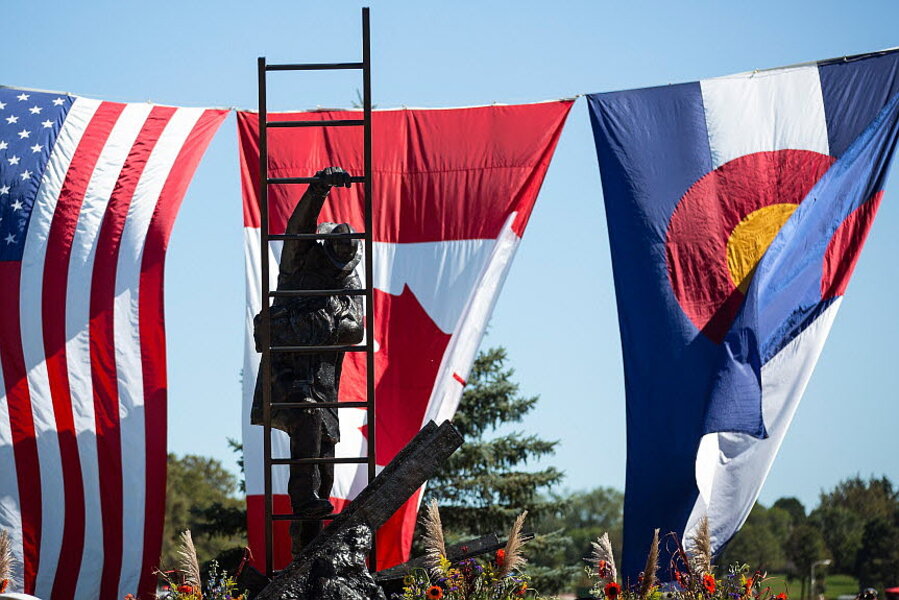Colorado rural counties are voting on secession from state
Loading...
Voters in 11 of Colorado’s 64 counties cast ballots Tuesday on whether they want to secede from the state – and they're not alone.
Two counties in northern California are preparing a petition to break off from that state in 2014. Maryland’s five conservative western counties are mounting an initiative to break away. And a split-off proposal for southern Florida has been attempted.
These efforts reflect not just residents' rising frustration with government in general, but also, more specifically, greater tension between rural conservative voters and more liberal city-dwellers, political analysts say.
In Colorado, the 11 northern counties are heavily Republican in a Democratic-controlled state. Locals opposed state efforts to tighten gun controls and to require that more energy come from renewable sources – a move, they said, that hit rural communities especially hard.
Will they break away? Not likely, say most analysts. Despite the local votes, which often succeed – as many predict Colorado’s votes on Tuesday will – the secession campaigns face giant hurdles in state legislatures and from the US Congress, both of which must approve. The language is spelled out in the US Constitution, Article 4, Section 3:
“New states may be admitted by the Congress into this union; but no new states shall be formed or erected within the jurisdiction of any other state; nor any state be formed by the junction of two or more states, or parts of states, without the consent of the legislatures of the states concerned as well as of the Congress.”
If any of the current campaigns gets past this hurdle, they will be the first since 1863, when West Virginia was created during the Civil War.
“These efforts are always percolating, but not realistic. They are more common today because we see more like-minded people feeling that they can’t control their political environment,” says Prof. John McGlennon, chairman of government at the College of William & Mary in Williamsburg, Va. “Nowadays, it is rural white voters who are at odds with their increasingly urban states. But the obstacles to secession are nearly insurmountable.”
While some rural voters may be happy, in theory, to be free from policies determined by urban/suburban politicians, it is often the poorest regions of states that want to secede, he says. “Who will pay for their roads, their schools, and other services which are subsidized by the metro areas?” Professor McGlennon adds.
"It is hard to imagine both the state legislatures and Congress approving such divisions, given the implications for state and national politics. Would suburban Republicans in Colorado want to cleave off a large chunk of the vote [that] a GOP candidate for governor would need to win? Would state or national Democrats be anxious to create a new state almost certain to send an all-Republican delegation to Congress?”
The US has seen scores of secessionist attempts over the years. Here is a partial list of what has come up recently:
- Baja Arizona: Liberal Arizonans tried in 2010 to create a new liberal bastion that would have been made by cutting off Pima County. Ultimately unsuccessful.
- Northern/Northern Massachusetts: Also in 2010, Maine state Rep. Henry Joy (R) introduced a bill to divide Maine in two, alleging that a separate proposal that would have turned millions of acres of woodland into a nature preserve would have forced residents to leave the area. The bill failed.
- Utah: State Rep. Neal Hendrickson (D) tried in 2008 to create a new state within the state, in a bid to “provide the citizens of what is presently southern Utah increased access to their state government.” Although Mr. Hendrickson played to widespread complaints that, in his words, “citizens in the more populated areas of northern Utah have many interests that stand in stark contrast to the interests of southern rural areas of the state, which feel they do not have the influence on state policymaking that citizens along the Wasath Front enjoy,” it didn’t pass.
- Delmarva: Complaining over regulations regularly drafted in far-away Annapolis, Md., that ignored the concerns of the Eastern Shore, state Sen. Richard Colburn submitted legislation in 1998 that would have carved off the eastern shore and parts of Delaware and Virginia into a separate entity, called Delmarva. It failed.
- Block Island: Rhode Island’s small community of Block Island tried to secede in the 1980s after the state's Senate and Supreme Court disallowed it from regulating a growing population of mopeds, driven mostly by vacationing mainlanders. Though formal secession failed, the Rhode Island legislature later approved a bill giving the island regulatory control over mopeds.
- West Virginia this year floated a law that would have allowed a handful of counties in the panhandle to rejoin Virginia. Although the measure was aimed at easing economic hardship in a manufacturing slump, voters and state legislators were not convinced.
While analysts say the current spate of secession attempts have little chance of success, the measures are nonetheless being watched for the margins they win by – which could be a signal to state legislatures that they ought to consider the measures. That's how Michigan gained a northern peninsula, once Wisconsin; how Indiana picked up a lake front, and how Utah gave up its upper right corner to Wyoming.
“Utah was taking its time coming into the Union over Congress’s insistence that the state renounce polygamy, and Wyoming took advantage of the moment,” says David Mark, editor-in-chief of Politix. “Nebraska also lost a chunk of itself to Colorado. So it does happen.”







